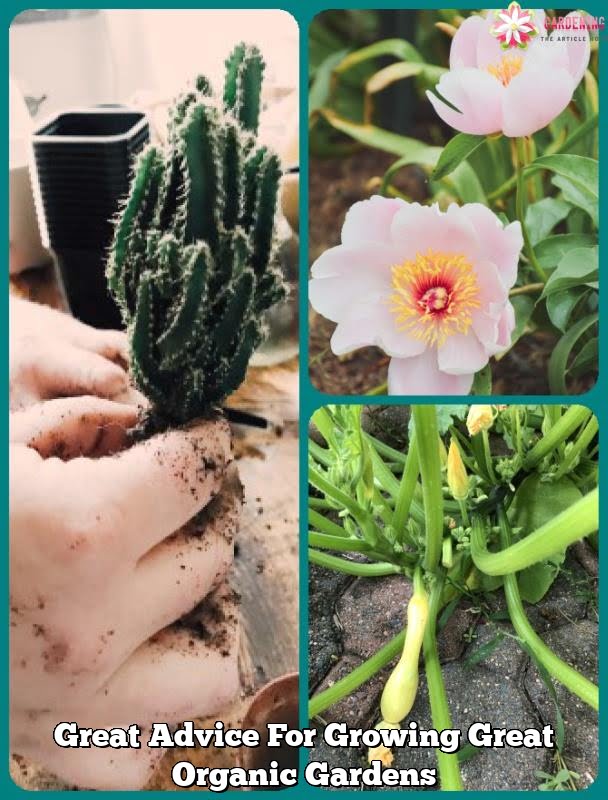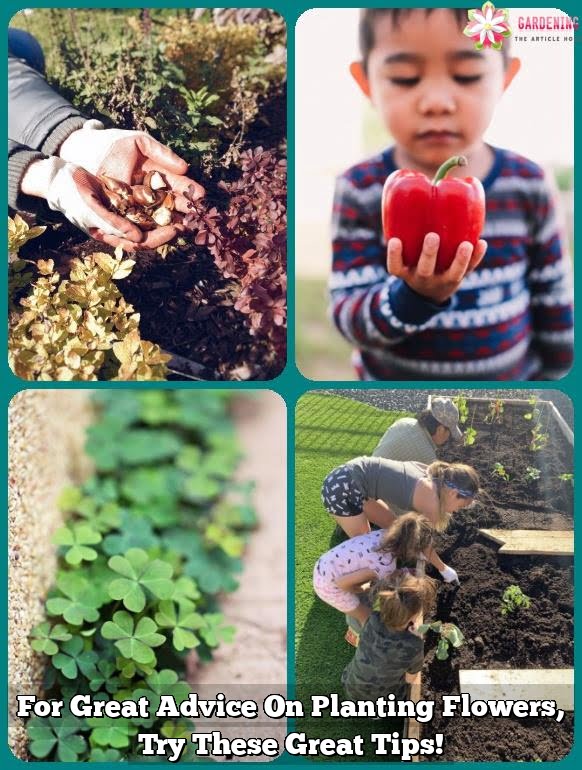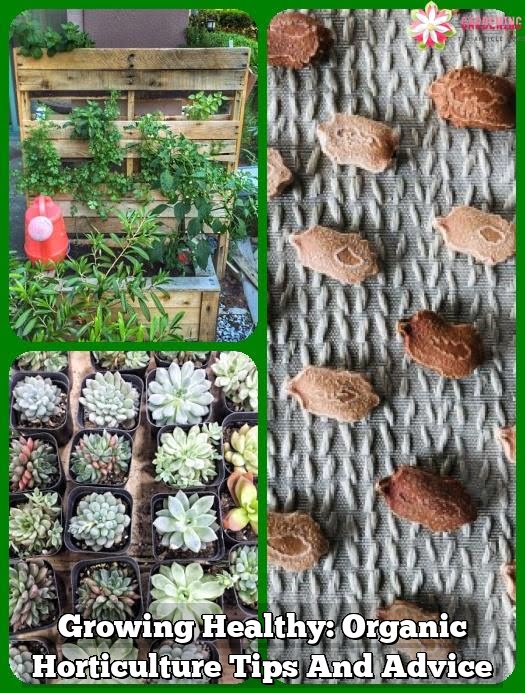Organic horticulture can yield many healthy benefits, but understanding how it works can be hard. You also have a large variety of seeds that you can choose from as well. The following tips will ensure that you make the most of your organic garden.
This really increases the chance that your plants will survive to adulthood. This method also helps tighten time between each planting. Your next crop of seedlings will be ready to be planted when you remove your old mature plants.
Use climbers to cover walls and walls. Many climbers can cover an unattractive wall or fence in a single growing season. They may also grow through tress and shrubs that are already grown, or through trees and shrubs that are already in the garden. Some require ties attaching them to supports, but some climbers use twining stems or tendrils and attach themselves to those surfaces. Some dependable types include honeysuckle, jasmine, wisteria, climbing roses, and climbing roses.
When you’re out and about in the garden, particularly in the autumn months, keep an eye out for sink bugs. Stink bugs prefer peppers, beans, tomatoes, as well as many fruits. If left uncontrolled, they can decimate your garden, so make plans for how to protect your plants from these pests.
Pre-soak your seeds through the night in a dark place. This will hydrate your seeds and it will get a kick start when growing. The seeds will have a better chance of surviving and blossoming.
If you plan on growing peas, begin the plantings inside instead of outside. The seeds will grow better germination rate if planted there first. The seedling sprouts will be heartier, which would help them resist diseases and pests more easily. You can transplant the seedlings outside after they are able to survive and thrive.
You should think about planting evergreens that yield berries in your yard space. Some evergreens that will provide winter color are the American Holly, Common Snowberry, Winterberry, and American holly.
Protecting your knees while gardening is very important.Many people experience back pain and stiffness from bending over and working in the garden for extended periods of time. Kneeling is a great way to reach your plants easily and is healthier for your back and legs. You can use knee pads to kneel without the ground.
If you’re growing indoor organic plants, you have to consider the light that they are getting. If the room you wish to grow them in faces in a direction that gets little light, find plants that can grow in medium or low-light environments. You could also consider using artificial lighting to help.
It is easy to quickly prepare your perennial garden. Use a spade to dig into the turf, then flip each piece over, then spread the area with approximately three inches of wood chips. Allow the newly turned soil to sit for two weeks, then plant the perennials that you just purchased.
Do not be in a rush when planting seeds. You need to start by moisturizing the soil. Seeds should be buried as deep as three times deeper than their own size. Some seeds you do not want to bury because they require light to grow.
After your seeds sprout, heat lamps are not needed. Watch your seeds closely to know when you can take these steps.
It will also adds a uniform and cohesive look to the garden.
Coffee Grounds
Add used coffee grounds to your garden’s soil. Coffee grounds have nitrogen that growing plants will utilize.
Spacing is an important factor in horticulture. It is easy to underestimate the amount of space your plants will need once they start to grow. Plan your garden carefully and put an appropriate amount of distance between the seeds.
If you want to sell your crops as organic, you can become certified as an organic grower.This will up your sales and show your loyal customers that they are getting is only the best that is grown.
Horticulture is a good way to connect with nature, but organic gardening takes it a step further by using earth-friendly methods.
The best option available to water your organic garden are soaker hoses.
Be specific about the things you would like to grow in your organic garden. Different varieties of a certain flower or vegetable need different types of environments. For example, some varieties of roses will thrive in a particular home garden, there are those that will thrive in your garden and those that will not. Make sure you find varieties that fit into your horticulture situation.
You have heard a lot about the uses of compost, but are you aware of what goes into compost? Compost is a mixture of wood chips, straw, leaves, straw, and grass clippings that have been allowed to sit until they are broken down into mock soil. You can use a compost instead of a commercial fertilizer as opposed to one that is commercial.
Use a mixture of 1 part ammonia with water to keep the snails away. Ammonia will turn to nitrogen later, and it breaks down into nitrogen that will help fertilize them. It will kill off the snails and keep them from bringing harm to your flowers. Use the water and ammonia mixture daily for best results.
When you plan your garden, consider the vegetables that you most commonly use in the kitchen. This will make your food bill every month and allows you to use everything you grow. Don’t bother wasting time on growing foods that your family doesn’t enjoy.
Dwarf Fruit Trees
Dwarf fruit trees are an option for a small sized garden. The dwarf tree is a great option where space for a garden is limited, but there will always be room for dwarf fruit trees. These tiny trees produce regular sized fruits and produce fruit after about four years from planting.
A well-cared for organic garden can enhance the beauty of your property and be a source of dietary nutrition. Knowing what and when to plant is also something to keep in mind. Using the information that has been provided is a great way to start an organic garden of your own.

Welcome to my blog about home and family. This blog is a place where I will share my thoughts, ideas, and experiences related to these important topics. I am a stay-at-home mom with two young children. I hope you enjoy reading it! and may find some helpful tips and ideas that will make your home and family life even better!





